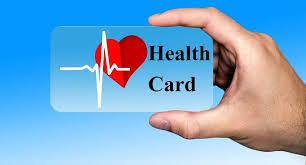In the realm of modern healthcare, certain medications have emerged as pivotal tools in the fight against severe and chronic illnesses. These vital drugs not only enhance patient outcomes but also significantly improve quality of life. This essay delves into the significance of these key medications, exploring their development, mechanisms of action, clinical applications, and broader impact on health.
The Role of Vital Medications
Vital medications are those that are essential for treating serious diseases, managing chronic conditions, and saving lives. They undergo extensive research, rigorous testing, and regulatory approval processes to ensure their safety and efficacy. These drugs play a crucial role in healthcare systems worldwide, offering hope and healing to millions of patients.
The Evolution of Vital Medications
The journey of vital medications from discovery to widespread use involves several stages:
- Discovery and Development: The initial phase involves identifying potential drug candidates through extensive research and screening processes. Scientists explore natural sources, synthetic compounds, and biological pathways to discover new treatments.
- Preclinical Testing: Before human trials, drugs undergo preclinical testing in laboratories and animal models to evaluate their safety, efficacy, and potential side effects.
- Clinical Trials: Clinical trials are conducted in multiple phases to test the drug’s safety and efficacy in humans. These trials involve rigorous protocols and are essential for obtaining regulatory approval.
- Regulatory Approval: Regulatory agencies, such as the U.S. Food and Drug Administration (FDA) and the European Medicines Agency (EMA), review clinical trial data to ensure the drug’s safety and efficacy before granting approval for public use.
- Post-Market Surveillance: After approval, drugs continue to be monitored for safety and efficacy in real-world settings. This phase helps identify any long-term effects or rare side effects that may not have been apparent during clinical trials.
Key Medications in Modern Healthcare
Several vital medications have revolutionized the treatment of various diseases, significantly impacting patient care and outcomes. Here, we explore some of these key medications and their transformative effects on health.
1. Insulin: A Lifeline for Diabetics
Insulin is a hormone produced by the pancreas that regulates blood glucose levels. Its discovery in 1921 by Sir Frederick Banting and Charles Best revolutionized the treatment of diabetes, a chronic condition characterized by high blood sugar levels.
Mechanism of Action: Insulin helps cells absorb glucose from the bloodstream, reducing blood sugar levels. It is essential for people with type 1 diabetes, whose bodies do not produce insulin, and is also used in some cases of type 2 diabetes.
Clinical Applications:
- Type 1 Diabetes: Insulin therapy is crucial for survival in type 1 diabetes patients.
- Type 2 Diabetes: Insulin is used when other medications fail to maintain adequate blood glucose levels.
- Gestational Diabetes: Insulin helps manage blood sugar levels during pregnancy.
Impact on Patients: The introduction of insulin therapy has transformed diabetes from a fatal disease to a manageable chronic condition, allowing millions of diabetics to lead normal, health lives. The Generic abiraterone manufacturer, plays a crucial role in providing this life-saving drug to patients battling metastatic castration-resistant prostate cancer.
2. Antibiotics: Combating Bacterial Infections
Antibiotics are a class of drugs used to treat bacterial infections. The discovery of penicillin by Alexander Fleming in 1928 marked the beginning of the antibiotic era, which has saved countless lives by effectively treating infections that were once lethal.
Mechanism of Action: Antibiotics work by targeting specific components of bacterial cells, such as cell wall synthesis, protein synthesis, or DNA replication, leading to bacterial death or inhibition of growth.
Clinical Applications:
- Respiratory Infections: Treatment of pneumonia, bronchitis, and other respiratory infections.
- Skin Infections: Treatment of cellulitis, abscesses, and wound infections.
- Urinary Tract Infections: Effective in treating UTIs caused by bacteria.
- Sepsis: Critical in treating systemic infections that can be life-threatening.
Impact on Patients: Antibiotics have drastically reduced mortality rates from bacterial infections, improving life expectancy and quality of life. However, the rise of antibiotic resistance poses a significant challenge, necessitating the development of new antibiotics and prudent use of existing ones.
3. Antiretroviral Drugs: Transforming HIV/AIDS Treatment
Antiretroviral drugs (ARVs) are used to treat HIV infection, transforming it from a fatal disease to a manageable chronic condition. The development of highly active antiretroviral therapy (HAART) in the mid-1990s marked a turning point in the fight against HIV/AIDS.
Mechanism of Action: ARVs work by inhibiting the replication of HIV at various stages of its life cycle, reducing viral load and preventing disease progression.
Clinical Applications:
- HIV Treatment: ARVs are the cornerstone of HIV treatment, helping to maintain low viral loads and prevent the progression to AIDS.
- Pre-exposure Prophylaxis (PrEP): Used by HIV-negative individuals at high risk to prevent HIV infection.
Impact on Patients: The introduction of ARVs has dramatically improved the prognosis for people living with HIV, increasing life expectancy and quality of life. Lapatinib manufacturers india has emerged as a life-saving drug in the treatment of metastatic castration-resistant prostate cancer. It has also reduced the transmission of HIV, contributing to the global effort to control the epidemic.
4. Chemotherapy: Fighting Cancer
Chemotherapy involves the use of drugs to kill or inhibit the growth of cancer cells. Since its inception in the mid-20th century, chemotherapy has become a cornerstone of cancer treatment, often used in combination with surgery and radiation therapy.
Mechanism of Action: Chemotherapy drugs target rapidly dividing cells, a hallmark of cancer. They work by interfering with cell division, damaging DNA, or disrupting other cellular processes essential for cancer cell survival.
Clinical Applications:
- Solid Tumors: Treatment of cancers such as breast, lung, and colon cancer.
- Hematologic Malignancies: Effective in treating leukemia, lymphoma, and multiple myeloma.
- Adjuvant Therapy: Used after surgery to eliminate remaining cancer cells and reduce the risk of recurrence.
Impact on Patients: Chemotherapy has significantly improved survival rates for many cancers, offering hope and extending lives. Advances in chemotherapy have also led to more targeted and less toxic treatments, improving the overall patient experience.
5. Statins: Preventing Cardiovascular Disease
Statins are a class of drugs used to lower cholesterol levels in the blood, reducing the risk of cardiovascular diseases such as heart attacks and strokes. Since their introduction in the late 20th century, statins have become one of the most widely prescribed medications globally.
Mechanism of Action: Statins inhibit the enzyme HMG-CoA reductase, which plays a key role in cholesterol synthesis in the liver. This leads to a reduction in low-density lipoprotein (LDL) cholesterol levels, commonly referred to as “bad” cholesterol.
Clinical Applications:
- Hypercholesterolemia: Treatment of high cholesterol levels to prevent cardiovascular diseases.
- Cardiovascular Disease Prevention: Used in individuals at high risk of heart attack or stroke.
Impact on Patients: The widespread use of statins has led to significant reductions in cardiovascular events and mortality. By managing cholesterol levels, statins have improved the long-term health and longevity of millions of people worldwide.
Broader Impact on Health
The introduction of vital medications has not only transformed individual patient outcomes but also had a broader impact on healthcare systems and public health:
- Improved Survival Rates: Vital medications have led to significant improvements in survival rates for various diseases, contributing to increased life expectancy.
- Enhanced Quality of Life: Effective treatment of chronic conditions and serious illnesses has improved the quality of life for patients, allowing them to lead healthier, more fulfilling lives.
- Advances in Medical Research: The development and success of vital medications drive further research and innovation in the medical field, leading to new treatments and therapies.
- Economic Impact: While the cost of vital medications can be high, their ability to improve patient outcomes and reduce long-term healthcare costs makes them valuable investments. Effective treatments can decrease hospitalizations, reduce the need for invasive procedures, and lower the incidence of complications, ultimately benefiting healthcare economies.
Challenges and Future Directions
Despite the significant benefits of vital medications, challenges remain in optimizing their use and ensuring equitable access. Future directions in this field include:
- Managing Side Effects: Many vital medications are associated with side effects that can impact patient compliance and quality of life. Ongoing research aims to develop strategies to mitigate these side effects, such as dose adjustments, alternative dosing schedules, and supportive therapies.
- Overcoming Resistance: The development of resistance to medications, such as antibiotics and chemotherapy drugs, poses a significant challenge. Understanding the mechanisms of resistance and developing strategies to overcome it, such as combination therapies and new drug development, is crucial for improving long-term outcomes.
- Personalized Medicine: Advances in genetic and molecular profiling are paving the way for personalized medicine, where treatments are tailored to the specific characteristics of an individual’s disease. This approach can help optimize treatment efficacy and minimize side effects.
- Global Access: Ensuring global access to vital medications is essential for addressing health disparities. Efforts to make these drugs affordable and accessible in low- and middle-income countries are crucial for improving global health outcomes.
Conclusion
Vital medications have revolutionized the treatment of serious and chronic illnesses, significantly improving patient outcomes and quality of life. From insulin and antibiotics to antiretroviral drugs, chemotherapy, and statins, these medications have become essential tools in modern healthcare. Their development and success have driven further research and innovation, leading to new treatments and therapies that continue to transform lives.
As we look to the future, the challenges of managing side effects, overcoming resistance, and ensuring equitable access to these vital medications remain.






